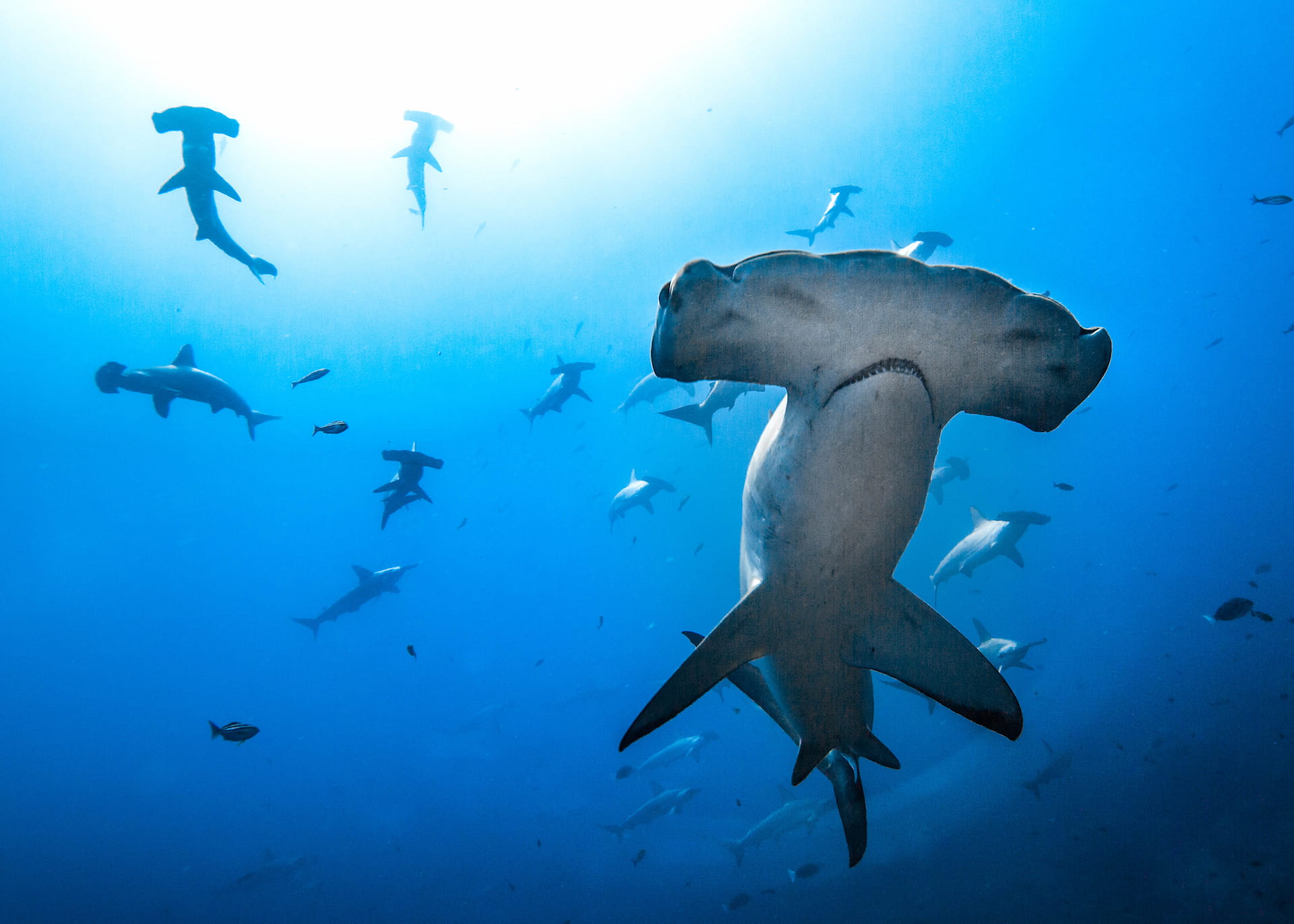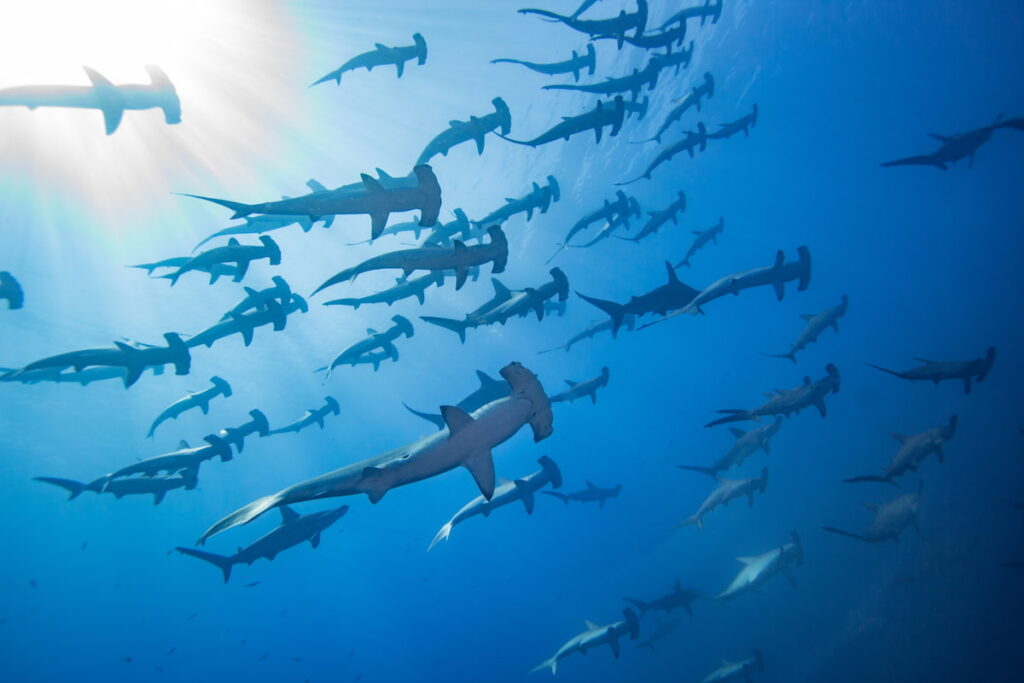How Many Species of Hammerhead Shark Are There?
It’s hammer(head) time

Hammerheads are some of the most recognizable fish in the sea—their iconic “hammer” head is unlike the head of any other shark out there. But did you know there are actually several species of hammerhead?
Get the scoop on these spectacular sharks!
Get Ocean Updates in Your Inbox
Sign up with your email and never miss an update.
What is a hammerhead shark?
Let’s start with the basics. Hammerheads are elasmobranchs, which are cartilaginous fish—meaning they have skeletons made of cartilage rather than bone. Other elasmobranchs include rays, skates and other sharks.
More specifically, hammerheads are fish within the family Sphyrnidae, defined by their hammer-shaped head called a cephalofoil. The cephalofoil serves a few purposes, including making it easier for hammerheads to maneuver when going after prey (although, the downside is it might not be as hydrodynamic as previously thought). The wide shape of the cephalofoil also means more surface area for sensory organs called ampullae of Lorenzini, which detect electrical fields and help the sharks find prey, including ones buried in the sand.
How many species of hammerhead shark are there?
Within the hammerhead family, there are two genera, or subgroups: Sphyrna, which has eight species, and Eusphyrna, which has only one species. The smallest species within the hammerhead family reaches to about three feet long, where the largest can grow to 15 feet or more.

Read on for a spotlight on a few well-known—and some lesser-known—species of hammerheads.
Winghead shark (Eusphyra blochii)
Status: Endangered
Winghead sharks are the only species in the genus Eusphyrna, which is special already. If that wasn’t enough, they have one of the most dramatic cephalofoil shapes of all the hammerhead sharks—hence the “wing” in its name. They’re found in the Indo-Pacific region from China to Australia and can reach a maximum of six feet in length. They like to hang out in relatively shallow water and snack on small bony fish, crustaceans and cephalopods such as cuttlefish, octopus and squid.
Great hammerhead (Sphyrna mokarran)
Status: Critically endangered
Great hammerheads are the largest—and arguably most iconic—of the hammerheads. They are found in coastal and pelagic habitats in temperature and tropical regions around the world. They’re somewhat unusual among other coastal sharks because they will regularly go after other sharks and rays rather than primarily sticking to smaller bony fish or crustaceans. They will also go after larger prey and can consume prey about 25% their body size.
Scalloped hammerhead (Sphyrna lewini)
Status: Critically endangered
Scalloped hammerheads can be somewhat easily confused with the great hammerhead, but their cephalofoil is slightly “wavier”—hence the “scalloped” part of their name. Similar to greats, they are found around the world in tropical and temperate regions. During their seasonal migrations, they travel in large schools with hundreds of other scalloped hammerheads.
Bonnethead (Sphyrna tiburo)
Status: Endangered
The bonnethead is the smallest member of the hammerhead family, only reaching about four feet in length. They are found throughout the Western Atlantic, Eastern Pacific and Gulf of Mexico and are commonly seen in shallow bays, seagrass beds and sandy areas inshore. Unlike the other hammerheads, which are strictly carnivores, bonnetheads have been found to eat seagrass. One study found seagrass made up to 62% of a bonnethead’s stomach contents! That’s one shark that understands the importance of eating your veggies.
You might have picked up on something else these sharks have in common: All are considered endangered or critically endangered. Sharks like hammerheads depend on a sustainable ocean in order to thrive—visit Ocean Conservancy’s Action Center to see how you can take action to support a healthy ocean for all ocean animals.